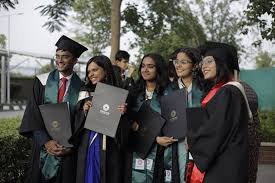
New Delhi: The Mohfw has decided to do away with the colonial-era black gown and cap during convocations and replace them with state-specific Indian traditional dress. The health ministry has asked all central government hospitals and medical teaching institutes, including AIIMS, to wear state-specific Indian traditional dress during convocations. This is not the first time the central government has created such a dress code for convocations. In 2015, the University Grants Commission (UGC) first asked all higher educational institutions – both public and private – to adopt traditional attire for their convocation ceremonies. It has since reiterated this request from time to time. While some doctors praised the initiative, others said it is an attempt to divert attention from major health-related issues.
The letter, titled ‘Identification of Dress Code for Central Government Medical Teaching Institutes’, refers to the Panch Pran (five resolutions) outlined by the Prime Minister. “In this regard, it is observed that currently, as a matter of practice, black robes and caps are being used during convocations by various institutes of the Ministry. This attire originated in Europe during the Middle Ages and was introduced by the British to all their colonies. The above tradition is a colonial legacy which needs to be changed.” The ministry said accordingly it has been decided by the ministry that the various institutes of the ministry, including AIIMS and Institutes of National Importance (INIs) “engaged in imparting medical education will design an appropriate Indian dress code for the Convocation Ceremony of their institute” based on local traditions of the state in which the institute is located, said the letter to all the heads of all the central government hospitals, AIIMS, INIs, and central government medical teaching institutes.
The ministry further said the proposal to this effect should be submitted to them for consideration and approval by the Secretary of Health. The UGC, from its first notice issued in 2015 to 2019 and 2024, had been directing all universities to switch to handloom fabrics for ceremonial attire during their annual convocations. “The use of handloom fabrics would not only instil a sense of pride in being Indian but also promote the handloom industry in the country, which provides employment opportunities to many people living in rural areas,” the UGC said in its letter in January this year. The first time Indian traditional dress – sari and dhoti-kurta – was worn by Banaras Hindu University students in 2015 at their convocation.

